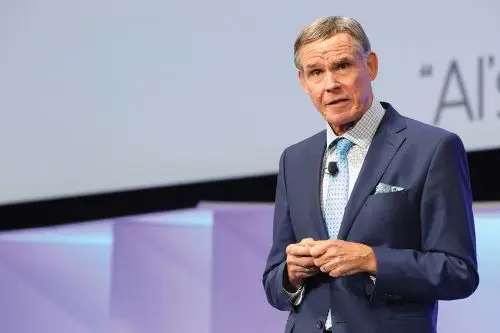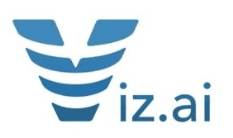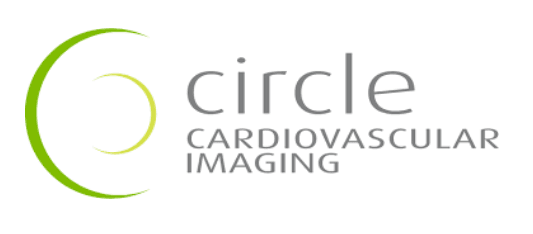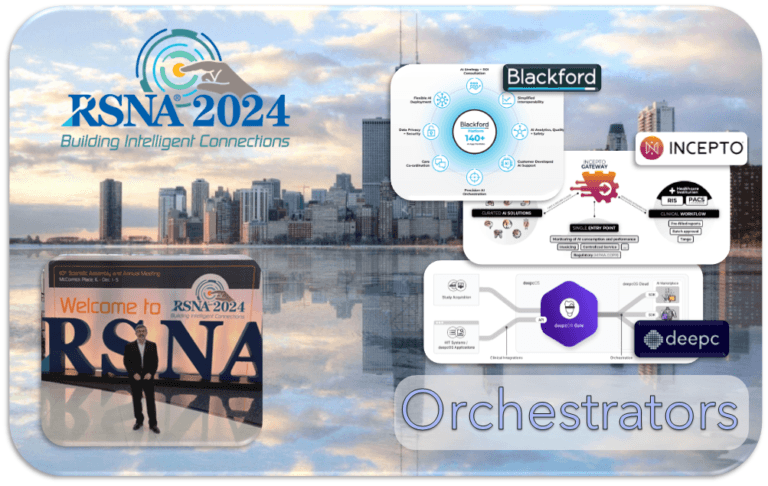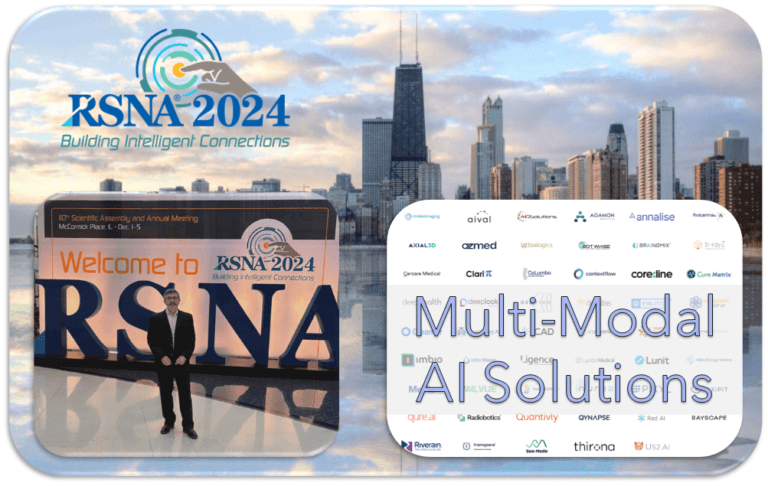Trends & AI Innovations
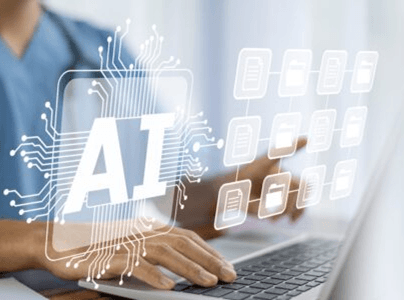
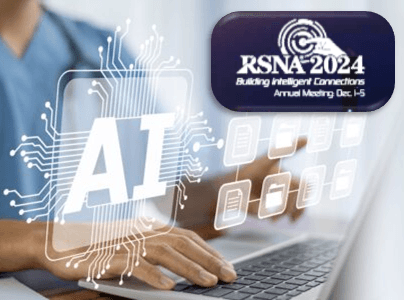
Trends & AI Innovations
This year’s RSNA showcased innovations which are bound to transform radiology redefining diagnostic precision, workflow efficiency, and cross-specialty collaboration. From multi-modal diagnostic acceleration to AI-powered workflow orchestration, the event underscored how cutting-edge technologies are breaking down silos, enhancing decision-making, and addressing workforce challenges. As AI adoption continues to expand, its role in multi-modality integration, structured reporting, and predictive analytics is shaping a future where radiology is more connected, efficient, and patient-centric than ever before.
I had the pleasure of attending the 2024 Radiological Society of North America annual meeting. Once again around 40k attendees, between healthcare professionals and industry representatives, shared the halls of the McCormick Center. It is an exciting event that offers the opportunity to reconnect, learn about current products and gain a glimpse to what lies ahead. This year’s theme ‘Building Intelligent Connections’ stressed the transformative role that intelligent devices have been playing in healthcare.
AI is igniting a revolution in healthcare spanning from enhancing diagnostic accuracy and impacting workflow efficiency, to reducing time for MRI acquisitions, to reinventing imaging informatics, leveraging multimodal data integration and addressing radiologist’s workforce challenges. While the financial implications of AI adoption emphasize the importance of return on investment from patient, provider and enterprise perspective, the industry is still in the ascending stage of the adoption curve. However, various studies and products are showcasing dramatic potentials, which, given the increasing costs and diminishing availability of resources, will undoubtably lead to the recognition of the value that can be garnered by adopting the newer technologies.
RSNA: Key Observations and Trends
There were many technological advancements in AI that pervaded all aspects of medical devices and software solutions. These included
- Human-AI Synergy: The widening adoption and impact of AI are seeing as combination of human and machine intelligence can lead to connections to augment the radiologist capabilities while predicting patient risks and implement preventive measures, leading to a new era of personalized medicine.
- Multi-Modal Solutions: The trend toward multi-condition, multi-modality AI solutions represents a significant shift in the medical imaging AI landscape. This includes diagnostic acceleration through AI in medical imaging, particularly in triage and point-of-care scenarios, enabling faster decision-making and improved patient outcomes across various imaging modalities and clinical conditions.
- Reporting: Workflow optimization continues to deliver significant improvements in efficiency and quality, enhancing the radiologist’s ability to generate accurate and comprehensive reports.
- Orchestration: Platform market represents a critical component in the scaling of AI adoption in medical imaging, with continued evolution toward more comprehensive and sophisticated solutions.
The Widening Adoption and Impact of AI
Amongst the many plenary sessions, two of them stand out as the presenters emphasized the benefits of combining human and AI capabilities to create connections that can augmented the radiologist capabilities as well as predicting patient risks and suggesting preventive measures. These aspects are harbingers of a new era of personalized medicine.
President Address
RSNA President Curtis P. Langlotz, MD, PhD, emphasized the combination of human and machine intelligence, advocating for forming intelligent connections to lead radiology into an exciting future. During the presentation, Dr. Langlotz emphasized how AI can amplify human expertise, streamline workflows, and foster deeper interpersonal connections within healthcare. Acknowledging early concerns about AI, Dr. Langlotz pointed out that growing familiarity has shifted perceptions, underscoring that machine intelligence is complementary, not superior, to human intelligence. He advocated for universal electronic image exchange, accessible de-identified data for AI research, and diverse, interdisciplinary teams to design equitable and transparent AI models. Concluding on a hopeful note, he argued that by automating routine tasks, AI can alleviate burnout, enabling radiologists to focus on meaningful patient care and strengthening the human connections that are central to healthcare.
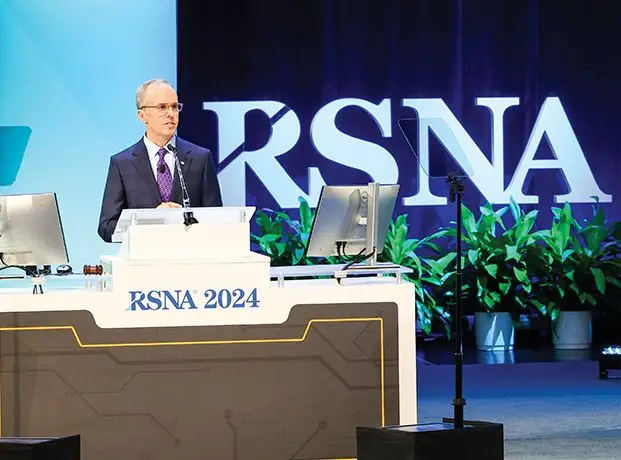
AI’s Transformation of Medicine
Eric Topol, a cardiologist and executive vice-president of the Scripps Research Translational Institute, discussed how AI provides the power to predict patient risks and implement preventive measures. Dr. Topol discussed the transformative potential of artificial intelligence (AI) in medicine. He emphasized the shift from unimodal AI, which analyzes a single data type, to multimodal AI capable of integrating diverse data sources—such as electronic health records, genomics, and environmental factors—to create comprehensive patient models. This evolution enables personalized medical forecasting, early disease detection, and tailored preventive strategies. Dr. Topol highlighted studies where AI predicted breast cancer years before manifestation and assessed pancreatic cancer risk using electronic health records. He underscored the importance of transparency and trust in AI’s integration into clinical practice, noting that radiologists’ expertise is crucial in leveraging AI’s full potential to usher in a new era of individualized medicine
